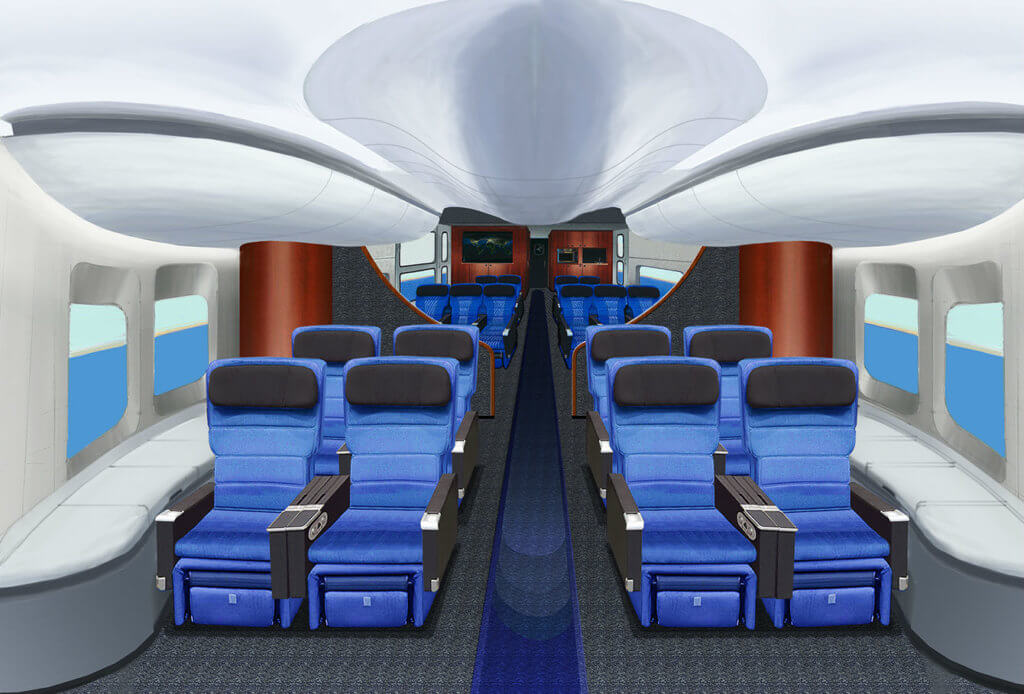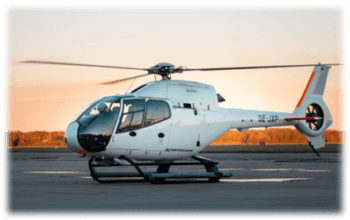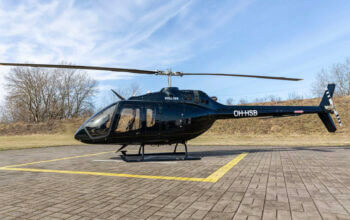Estimated reading time 8 minutes, seconds.
Hybrid airships prototyped at the Lockheed Martin Skunk Works in California, which has pushed the boundaries of aerospace design for decades, are the key to reducing global dependence on mostly Chinese mining operations for rare earth metals (REMs).

Against the backdrop of the Aerospace Industries Association of Canada’s 2016 summit in Ottawa, U.K.-based Straightline Aviation (SLA) and Quest Rare Minerals Ltd. of Montreal signed a memorandum of understanding for seven LMH-1 airships to be used to develop and exploit a huge REM deposit in Northern Quebec.
Quest executive chairman Pierre Lortie, who formerly headed several divisions of Bombardier, told the media briefing that REMs are critical to modern economies because of their use in “just about everything we have in modern society,” including electric vehicles and mobile devices.
“The issue for industrial countries is that 90 per cent of that production today comes from one place, which is China,” said Lortie. “Consumers–and manufacturers–are concerned because [having] only one supplier is always a bit risky.”
China, which has strict export quotas on REMs, has arbitrarily cut production in the past, causing problems for many western industries, including aerospace.
Straightline, which also has offices in New York and Los Angeles, was established by a group of former Virgin Aviation executives specifically to operate hybrids. Its chief operating officer, Mark Dorey, called the deal to operate Quest’s airships “a defining contract” with implications for global market expansion.
The LMH-1 costs $40 million each but the companies put the value of the service agreement at US$850 million, including fuel costs, over a 10-year period beginning in 2019, with further extensions of up to 20 years. That’s in line with the mine’s projected life, during which annual ore concentrate shipments over some 250 kilometres to Schefferville, Que., are projected at more than 200,000 tonnes.
Grant Cool of Edmonton, chief operating officer of Hybrid Enterprises, the Atlanta-based exclusive worldwide LMH-1 reseller, said the Skunk Works had flown a one-third scale demonstrator. The production version, at 120 feet (37 metres) overall length, is capable of carrying 21 tonnes of cargo and 19 passengers at 60 knots up to 1,400 nautical miles. It derives 80 per cent of its carrying capacity from its helium-filled hull. The other 20 per cent is from lift generated aerodynamically by its tri-lobe design, powered by four diesel-driven thrust-vectoring propellers. The sidestick fly-by-wire system, based on the setup in Lockheed Martin’s F-35 Lightning II joint strike fighter, also handles conventional control surfaces at the stern.

An air cushion landing system (ACLS) akin to a hovercraft skirt means that the LMH-1 will be able to land in any open area, including on water. Once it is taxied into position, the ACLS fans are put in reverse, sucking the airship onto the ground.
Cool said the low floor in the gondola beneath the central lobe obviates the need for expensive loading equipment. As for operating costs, those were described as “significantly less” than fixed-wing aircraft or helicopters.
Lockheed Martin expects to begin building an initial 12 aircraft “somewhere around the end of 2018,” setting the stage for commercial deliveries to begin in 2019 with Quest as the launch customer. Meanwhile, component certification will continue through 2017 with flight certification in 2018 leading to type certification by the end of 2018.
Cool said that while the LMH-1 can be flown by one pilot, two would be the norm and their training will be done by the Centre Québecois de Formation Aéronautique (CQFA) in Dorval.
Jean LaRoche, the CQFA’s director of research and development, attending the Air Transport Association of Canada 2016 conference and trade show in Vancouver, said the challenge is that modern airships are not the lighter-than-air dirigibles typified by modern Goodyear blimps or the rigid German Zeppelins developed a century ago.
“They are heavier than air, made to deliver heavy loads and come back,” LaRoche told Skies. “Legally, it falls between the known training standards. The challenge is to have people sitting around the table, including the regulator, to determine what will be the knowledge requirement and later the testing requirement so that we have competent crews. It’s quite a challenge because it blends old fashioned skills with the unknown and new.”

Expecting the CQFA to approach the challenge as “a think tank for several months” and likening it to “a tango between the regulator and the trainer,” he said “the fun part is that we will have to design our own training tools, including the flight training device but also probably virtual reality.”
LaRoche suggested the hybrid’s relatively slow speed presents aircrews with “almost a helicopter point of view.” He said he was considering asking training captains from the offshore helicopter world to share their experience as a starting point for the new syllabus.
“The other discussion with the regulator today was about using a scaled down, stripped down vehicle as a trainer to certify the pilots,” said LaRoche. “So once we test the pilot on the smaller one, he or she will be certified on the larger one. In Holland, ship captains are trained on miniature ships and then they do a line indoctrination on the bigger one.”
The first commercial flight is targeted for 2019.
“I think that not too many years after that, it will probably be quite easy to make these ships into drones,” said LaRoche. “It’s already fly-by-wire; they use some lines of the F-35 code; it’s not unrealistic in northern operations to think that one day that could become a 20-tonne carrying drone.”
As for pilots, LaRoche said whether they choose to fly an airship will depend on the lifestyle they want.
“It will be northern flying; it will be 60 knots, low-level,” he added. “It’s almost a modern age bush operation.”
Skies took an in-depth look at how airships may affect the future of aviation in our November/December 2016 issue. To read the story, click here.
– with files from Lisa Gordon








